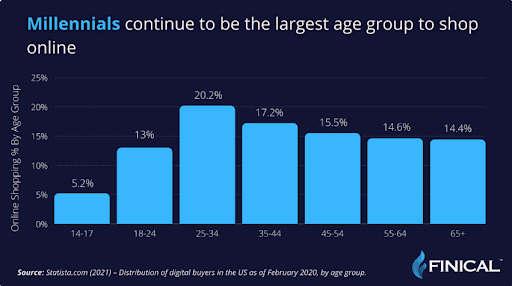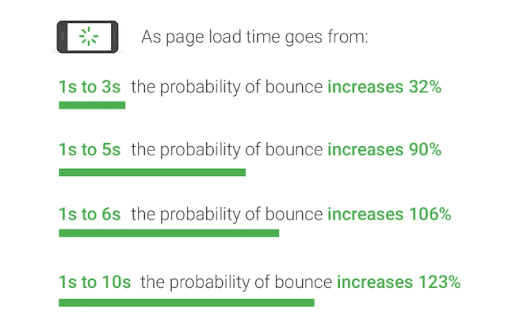Online shopping has become the norm in the digital era and e-commerce has made purchasing everything from clothing to beauty products, home goods, and even groceries much simpler.
Therefore, we’ve gathered some intriguing e-commerce statistics that you should follow up in 2023 to strengthen your own e-commerce business and catch up with the increasing competition.
Keep reading to find out!
Content
- General e-commerce statistics.
- Main users of the e-commerce industry.
- Customer experiences statistics.
General e-commerce statistics
E-commerce sales are expected to account for 20.8% of global retail sales in 2023.

This statistic clearly demonstrates how e-commerce is becoming an extremely important part of global commerce.
It is growing so quickly that it is expected to account for 24% of global retail sales by 2026.
This trend, once again, provides enormous opportunities for new entrepreneurs.
Top players across the globe in the e-commerce industry
While major players such as Amazon dominate almost every country’s e-commerce market, there are some regional variations.

Amazon is the most popular e-commerce brand in North America and Europe. However, when we look outside of the Western hemisphere—MEA (Middle East and Africa), LATAM (Latin America), and APAC (Asia-Pacific)—the picture appears to be slightly different.
Amazon ranks third in non-western regions, but the other top market players are more local.
Read more: What is the evolution of e-commerce in the future
China is the leading market in the e-commerce industry in 2022

Based on a recent ranking of e-commerce market size by country, China remains to be the world’s largest e-commerce market in 2022. According to analyst estimates, the country generates $1.54 trillion in e-commerce sales this year, making it the only country to do so by a significant margin.
By 2024, B2C e-commerce marketplaces are expected to generate $3.5 trillion in sales.
Many people already have accounts on well-known and trusted e-commerce marketplaces. Therefore, e-commerce brands must work hard to capture these shoppers’ attention, inspire them to visit their website, and then establish trust.
Learn how to grab the attention of customers by reading the article “The evolution of e-commerce in the future”
52% of e-commerce sites have omnichannel capabilities on average.
Most businesses today are multichannel.
This means that they sell to and communicate with customers via a variety of channels. You might have a website, a Facebook shop, an Instagram account, and an email list, for example.
Omnichannel enables you to optimize your communications with potential customers in order to nurture them through the sales funnel regardless of how they come into contact with your company.
As a result, companies that can provide customers with a seamless, personalized omnichannel experience will own the future of commerce.
However, 30% of small businesses don’t have a website.
With so many businesses slow to capitalize on the growing e-commerce industry, this is great news for new and existing e-commerce entrepreneurs.
As a result, businesses without websites should set up an online store before they’re left behind
Read more: Descriptive guide to build a website for business in 2023
The main audience of the e-commerce industry
Younger people buy online more than older people.

Specifically:
- 20.2% of online shoppers are between the ages of 25 and 34.
- Millennials are the largest group of digital buyers.
- Only 14.4% of online shoppers are 65 or older.
This isn’t exactly surprising. It is worth noting, however, that different demographics interact with online commerce in different ways. This will allow you to tailor every aspect of your customer experience to their needs and preferences.
Generation Z will have a significant impact on the future of online shopping.

Generation Z, those born between 1996 and 2010, is expected to have a significant impact on the retail industry. This generation is expected to account for 40% of all consumer spending, with $44 billion in purchasing power.
Retailers wishing to target this target audience must adapt their current practices to the digital generation, pursuing omnichannel marketing that fully utilizes social media platforms to advertise products and entice potential buyers.
Customer experience statistics
Social media presence in online stores increases customer purchases by 32% on average.
More sales are always a good thing, right? According to eCommerce statistics, online stores with a social media presence generate 32% more sales than those without. This could be because social media improves a shop’s online discoverability.
Longer page load times significantly increase users’ bounce rates.

In fact, when a webpage takes between one and three seconds to load, the likelihood of a user leaving increases by 32%. (compared to webpages loading in less than one second).
The longer the load time takes, the higher the bounce rate is.
People will not wait if your website is slow to load. So make sure your website loads quickly or really quickly.
One of the simplest and most effective ways to accomplish this is to reduce the size of the image files on your website.
Product images increase conversion rate by 250%.
The in-store shopping experience is difficult to replicate online. Buyers cannot get the same sense of touch and feel from online purchases as they can from offline purchases.
That is why good product photography can be a deciding factor for buyers to choose your store over others
3D or 360-degree product images
Such as the one above, help customers visualize these items in action and can increase conversions by up to 250 percent.
You can also even embed your videos in website popups and show them to visitors at the appropriate time.
The most common reason people shop on e-commerce is for free delivery.

Customers prefer the process simple and straightforward. This includes offering quick shipping and hassle-free returns.
Other important factors include the ability to use coupons and apply discounts (38.1%), read customer reviews (31%), easily return their purchased items (30.1%), and have a quick checkout process (27.8%).
In other words, the convenience of e-commerce is its strength.
Read more: What is e-commerce and the evolution of e-commerce?
Before making an online purchase, 81% of consumers conduct online research.
Remember that one of the primary reasons people shop online rather than in-store is the ability to research purchases.
The main point is to provide shoppers with detailed and accurate product pages that answer any and all questions they may have.
Product images, descriptions, and specifications should be readily available on your product pages.
This will instill trust and aid shoppers’ research.
30% of consumers say influencer recommendations are essential in their purchasing decisions.
The situation has shifted.
Consumers trusted recommendations from friends and family more than those from influencers just a year ago. However, only 27% of people now consider the former’s recommendation to be an important factor in their purchasing decisions.
It makes sense: Influencers are frequently regarded as experts in their particular niche. So, if a person follows a fitness influencer, it’s safe to assume that he or she is more knowledgeable about fitness than the majority of their friends.
The keynote: Leverage the power of influencers to boost sales.
After just two bad customer experiences, 76% of people will stop doing business with a company.
Trust is difficult to gain and easy to lose.
It’s understandable that customers would be hesitant to buy from a company again after being let down.
A poor customer experience will be the death of any business if left unchecked. Customer retention, on the other hand, can lead to massive business growth through repeat purchases.
So, ensure that your customers have a fantastic customer experience from beginning to end.
Customers will indeed stick around and continue to buy from your company if everything is done correctly.
83% of consumers consider customer service quality essential when deciding what to buy.
Customer service is essential for today’s consumers. Online businesses should establish strong relationships with their customers and prioritize hands-on customer service and make sure customer service is easily accessed.
Trust is built through excellent customer service. As a result, conversions and customer retention will improve.
On average, only 1.62% of visitors to e-commerce websites make a purchase.

This roughly translates to one or two people out of every 100 website visitors purchasing something.
That’s a lot of opportunities lost.
So you should pay close attention to your website’s conversion rate and work hard to improve it.
Fortunately, there are numerous options available. For more detailed information, you can contact icts.io to book a free consultation.
Approximately 80% of shopping carts are abandoned.

According to the most recent shopping cart abandonment rates, in Q2 2022, 80 percent of all online shopping carts will fail to complete the checkout stage. In other words, eight out of every ten online shopping baskets are abandoned without finishing the purchase process.
Based on quarterly data from the previous year, this is the second-highest abandonment rate, having dropped by one percentage point since Q1 2022. The lowest rates, at 78 percent, were recorded in the second quarter of 2021.
The most common reason for cart abandonment is high extra costs.
When your company’s goal is to increase sales, you’ll want to reduce the number of abandoned carts.
According to data, the most common reason people abandon carts is that additional fees are too expensive. These fees can include shipping, tax, and any other costs that are added to the final total during checkout.
Other reasons for cart abandonment include the requirement to create an account, long or complicated checkout processes, and not knowing the cost upfront.
Abandoned cart follow-up emails have an average open rate of 45%.
This is extremely high.
This makes sense when you consider the high level of buyer intent that shoppers have when they add products to their carts.
Make sure you have an email campaign to follow up on abandoned carts automatically. This can make a huge difference to your bottom line.
40% of users who have a bad experience with a brand’s mobile website will switch to its competitor.
This e-commerce statistic emphasizes the significance of mobile commerce one more time. Providing a fantastic mobile shopping experience is vital to customer retention.
INCLUSION
Global e-commerce trends will continue to evolve as digital technologies replace many old behaviors and cater to our everyday needs. As the population ages, e-commerce will no longer be an exception, but rather the rule, especially as Generation Z gains economic power.
The world changed when COVID and lockdowns occurs, and retail is no exception. It is essential to understand the e-commerce landscape—growth projections, buying patterns, consumer behaviors, and the role of social media in retail e-commerce. With all of these figures in the post, you are now prepared to strategically and effectively drive online sales.
You may also like:




0 Comment